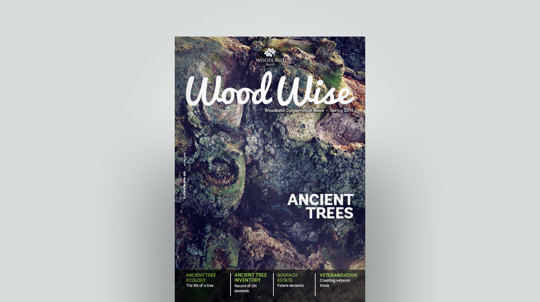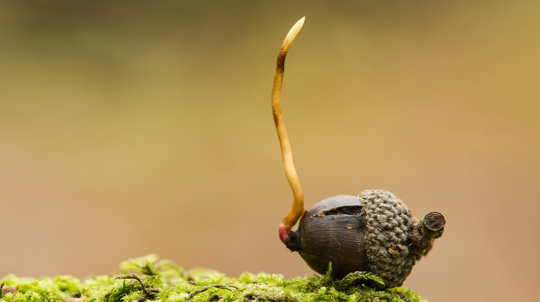Internationally-speaking, our Fortingall Yew is almost a youngster. The oldest individual tree in the world is thought to be a Great Basin bristlecone pine in California at almost 5,000 years old. That's more than 40 times the oldest known human, who lived for 122 years!
The oldest tree in the UK: how long do trees live?

Content manager
Trees are among the longest-living life forms on Earth. But just how old is the oldest tree, and where is it? Learn more about our amazing ancient trees and how you can help protect these priceless pieces of history and nature.
The oldest tree in the UK
The Fortingall Yew in Perthshire is believed to be the UK's oldest tree, with an estimated age between 2,000 and 3,000 years. Like many yews, this tree is in a churchyard and is so large that funeral processions are said to have passed through the arch formed by its split trunk in years gone by. The trunk has now split into several parts, so the yew no longer looks like a single tree, but many.

We can only protect the ancient and veteran trees we know about. The Ancient Tree Inventory holds records of over 209,000 ancient, veteran and noble trees, but we know more are out there. Tell us where they are by adding them to the inventory and help keep them safe for the future.
What is an ancient tree and why are they so important?
Once trees reach a certain age they are considered ancient. This means they have passed maturity and entered the third and final stage of their lifespan. The age a tree needs to reach to be considered ancient varies from species to species.
The yew is our longest-living species and isn't considered ancient until around 800 to 900 years old. Oak and sweet chestnut can both live for over 1,000 years and are ancient at 400 years. Other trees have shorter lifespans - like beech, which becomes ancient at 225 years - but they still far outstrip those of humans and most animals.
Ancient trees are essential to a healthy environment. They are important carbon stores and vital wildlife havens. Over their long lifespans, they develop into important habitats for thousands of different species, many of which depend on ancient trees to survive. Fungi grow in tree trunks and roots, invertebrates feed on decaying wood and a whole host of animals including bats, owls and pine martens make their homes in cavities that open as a tree ages. These habitats can take centuries to form, meaning they are irreplaceable if lost.
Despite their immense value, our incredible ancient trees have no legal protection. We're fighting to secure the protection these living legends deserve. Join us by signing the petition.


Keep living legends alive
Many of our oldest and most special trees are not legally protected. Urge Government to change the law and prevent further tragedy.
We've contributed to research that revealed at least 117 oak trees in England that are around 800 to 1,000 years old.
Other UK golden oldies
The Fortingall Yew is recognised as the oldest tree in the UK, but many others have reached an impressive age.
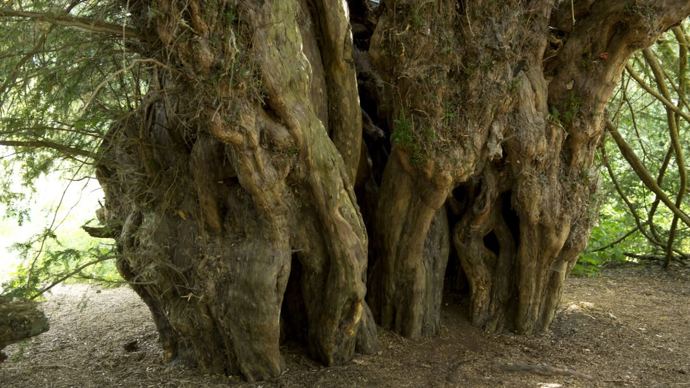
Credit: John Millar / WTML
Ankerwycke Yew, Berkshire
This enormous tree is thought to have borne witness to the sealing of Magna Carta in 1215 and served as a meeting place for Henry VIII and Anne Boleyn in the 1530s.
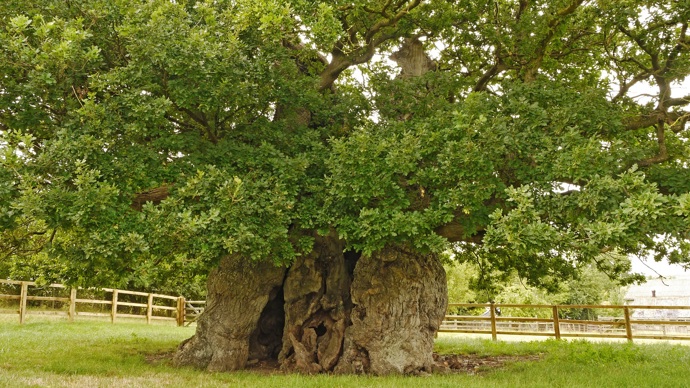
Credit: Julian Hight / WTML
Bowthorpe Oak, Lincolnshire
The Bowthorpe Oak in Lincolnshire may be one of the oldest and widest oaks in the country, with a girth of more than 13 metres and an estimated age of more than 1,000 years. The tree is so vast it's said tea parties were once held inside its hollow trunk.
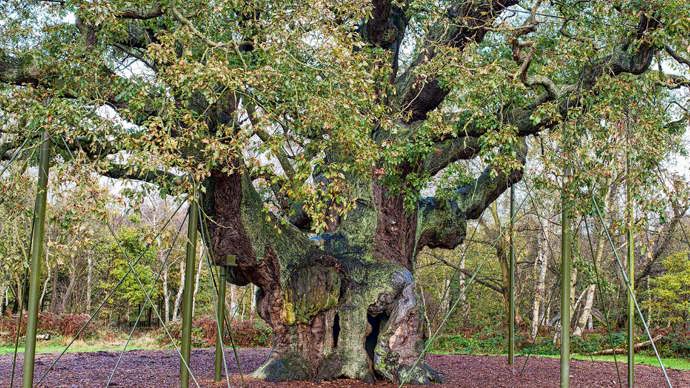
Credit: Phil Lockwood / WTML
Major Oak, Sherwood Forest, Nottinghamshire
Perhaps one of our most famous ancient trees, the Major Oak is said to have sheltered the legendary outlaw Robin Hood and his Merry Men. The tree is thought to be between 800 and 1,000 years old.






